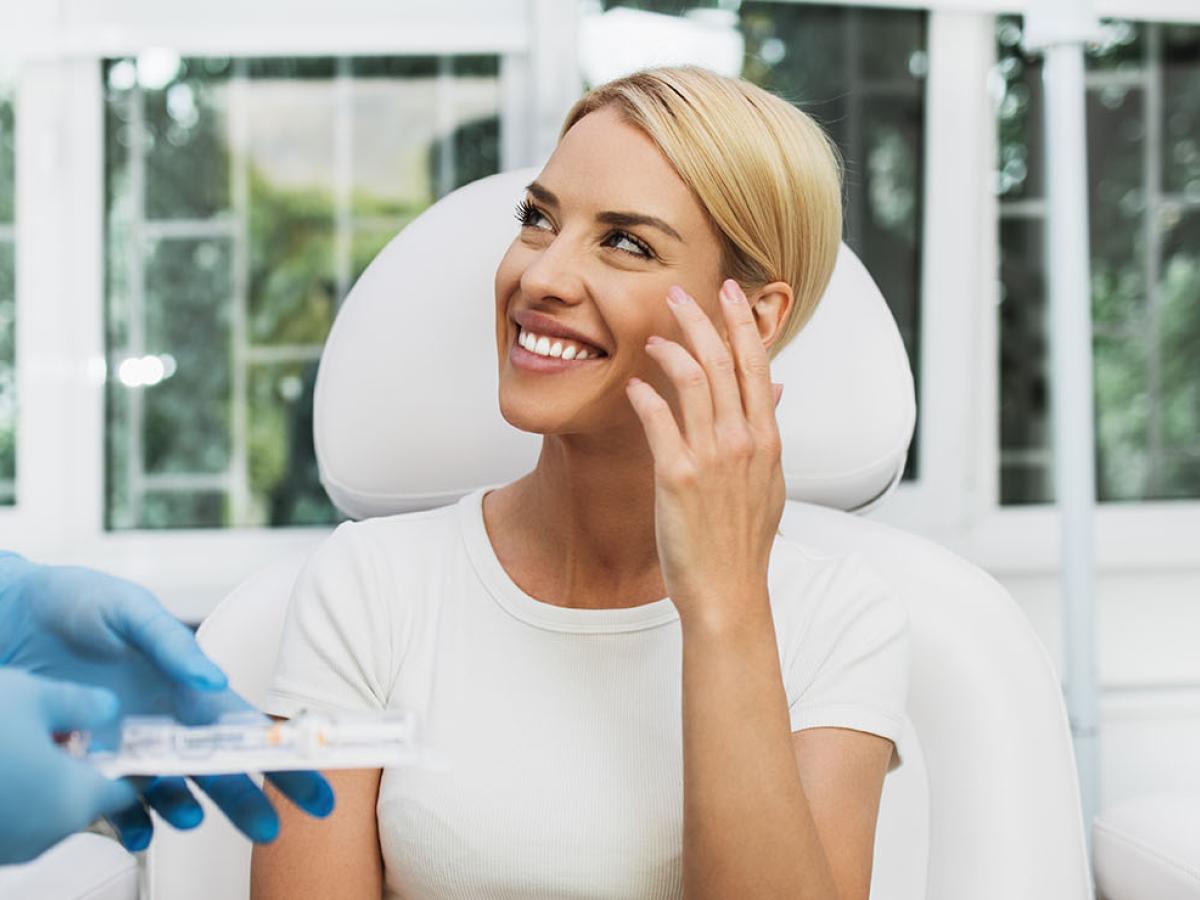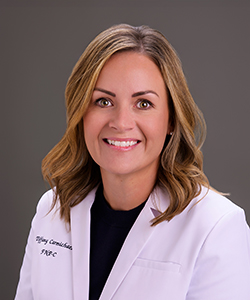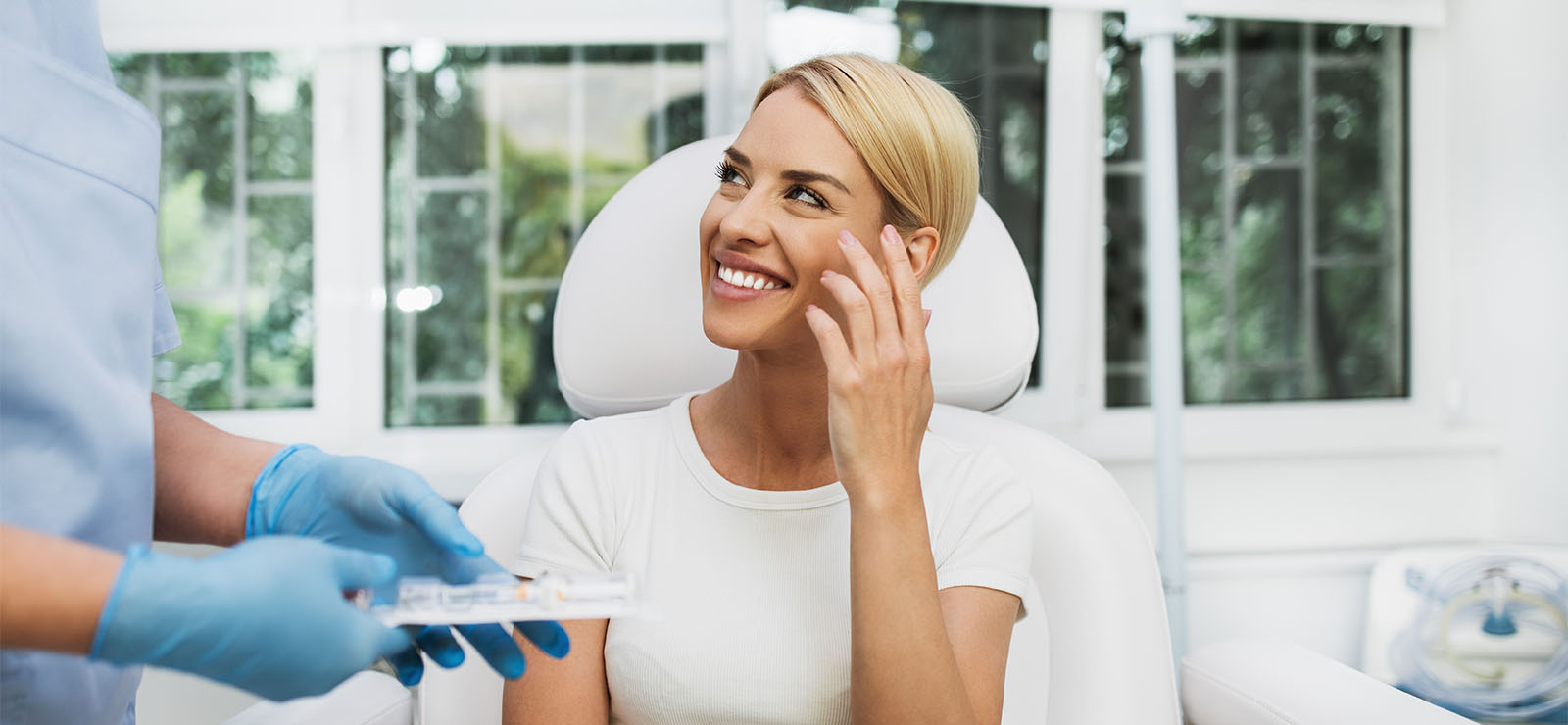September 23, 2024

If anyone asks if you’ve had a “vampire facial,” it’s not a sci-fi movie reference. It’s likely a compliment and trend-savvy reference to cosmetic treatments that use your own blood to rejuvenate skin tissue.
Platelet-rich plasma (PRP) treatments — as they’re known in health care — are a safe and effective way to combat the signs of aging.

“PRP injections can improve your skin’s texture, volume and elasticity. They can also stimulate hair follicles to combat hair loss,” says Tiffany Carmichael, an MU Health Care family nurse practitioner specializing in dermatology and cosmetic services. “No treatment is ever going to make a 60-year-old look 25. But will you see improvement in your skin and hair with PRP? Absolutely.”
Carmichael explains what PRP treatments are and how they may work to prevent or reverse the signs of aging:
What Is Platelet-Rich Plasma?
Platelets, a component in blood, are rich in proteins and growth factors — substances that stimulate cells and encourage healing. Separating platelets from the other blood components (red and white blood cells) creates PRP. This concentrated combination of proteins and growth factors has some impressive superpowers. It may not help you fly or turn invisible, but it does provide a powerful way to promote cell regeneration and healing.
PRP treatments involve a three-step process:
- Drawing blood
- Spinning the blood in a machine to separate the platelets
- Injecting the PRP into the area to be treated
“Platelet-rich plasma is a byproduct of your blood,” Carmichael says. “Essentially, we concentrate your platelets and use them to stimulate all kinds of things in your body.”
For years, health care providers have used PRP injections to treat orthopedic conditions, heal wounds and help with surgery recovery. But now they are also using them for cosmetic reasons.
What Does PRP Do for Skin and Hair?
One of the proteins in PRP, platelet-derived growth factor (PDGF), is especially useful for cell regeneration and tissue remodeling. When PRP is injected into your face, neck or hairline, PDGF breathes new life into your tissues, pumping them with supportive proteins and oxygen-rich blood.
Studies on cosmetic use of PRP in humans are limited, but most experts consider the treatment relatively safe with little risk. However, any procedure that breaks the skin has a risk of infection.
Although PRP does not help with rosacea (redness) or broken blood vessels, Carmichael shares several other cosmetic uses for PRP, including:
1. Reduces Wrinkles and Fine Lines
PRP can help fill in wrinkles and fine lines to reduce the signs of aging. But unlike Botox and other neurotoxins, PRP does not paralyze or affect muscular function. Instead, it stimulates the production of collagen, the protein that gives skin structure and support.
“We inject PRP during microneedling, a process that involves driving small needles into the skin. The controlled injury to the skin causes a rush of collagen,” Carmichael explains. “When you include PRP, it adds additional growth factors and proteins.”
Microneedling requires a series of three to six treatments and involves a longer recovery time than neurotoxins. You may experience redness and possible bruising for several days after each treatment. With PRP added, the healing time improves.
“Microneedling is an excellent treatment on its own,” Carmichael says. “PRP is the cherry on top. It will speed up your results and healing while decreasing your downtime.”
2. Helps Where Dermal Fillers Cannot
Dermal fillers help improve skin texture and add volume, but inject them everywhere, and you may end up looking puffy and out of proportion. There are some areas of the face that are particularly hard to treat with fillers, such as your undereye area and nasolabial folds (aka smile lines) — creases extending from the edges of your nose to the corners of your mouth. PRP injections are perfect for those spots.
“It’s hard to treat those two areas and still have it look natural,” Carmichael says. “PRP injections improve the skin’s texture, elasticity and thickness without adding too much volume.” On the flip side, Carmichael would never recommend PRP injections for cheeks — it doesn’t create enough volume for that area.
PRP, like fillers, also helps with acne scars. According to research, PRP treatment improved all types of acne scars, significantly reducing the scar size.
3. Stimulates Hair Growth
Many of the growth factors in PRP support the stimulation of hair growth and can help prevent premature hair loss. But using PRP for hair loss only helps with certain conditions, including recent male pattern baldness and female pattern hair loss.
The results of PRP treatments can take up to six months and can depend on:
- How long you’ve experienced hair loss
- How quickly your hair grows
“Depending on your hair loss, you’ll need somewhere between three to six treatments, spaced four weeks apart,” Carmichael says. “But it’s not something you have to do forever. PRP stimulates growth at the root. You can do yearly maintenance treatments, but it’s not necessary.”
4. Helps Prevent Severe Wrinkles
Collagen production begins to slow when we hit our 20s and continues to get slower every year. By your early 30s, you may start to see changes in your skin. After menopause, collagen production can become non-existent for many people.
When you get PRP treatments at a younger age, Carmichael says, it can correct some of those early changes and prevent the signs of aging from becoming severe. Much like cleaning out your gutters in early fall or salting the walkway before a snowstorm, taking some action now can prevent bigger problems later.
“If you have good skin in your 30s, PRP treatment can fine-tune some things and keep your skin looking great,” Carmichael says. “The goal is to correct any issues before we see significant impacts of damage and aging.”
Tips for Effective PRP Treatment
Your actions can impact the effectiveness of your PRP treatment. “Eighty percent of what we do in the clinic relies on what you do outside of it,” Carmichael says. “It doesn’t matter what kind of results I get for your skin. If you don’t make good choices, you can easily undo the work we did.”
Carmichael recommends taking these steps to get the most benefit from cosmetic PRP treatment:
- Choose an experienced professional: Any time you have something injected into your face, you want to make sure the professional is professionally trained and understands the proper anatomy to avoid any high-risk areas.
- Choose a location with high medical standards: Quality PRP treatment requires a good centrifuge (the machine that spins the blood) and adherence to the highest safety standards.
- Get a consultation: Everyone’s starting point and treatment plan are different. A consultation will ensure you know what to expect and get treatment that achieves your goals.
- Understand the cost: PRP can be expensive, especially if your treatment requires a series of treatments. Many providers offer packages, but if you can’t afford to finish the treatment series, you won’t get the full effect.
- Take care of your skin: You won’t see the same improvements if you smoke, don’t hydrate or skip sunscreen after treatment. Your provider will give instructions for post-procedure care. Make sure to follow them to avoid complications.
“It’s important to understand your options and know what treatment fits your personal and health history, goals and budget,” Carmichael says. “But treatment that promotes collagen production, like PRP injections, can have an impact, whether you’re doing it in your 30s, 40s, 50s or 60s.”
Next Steps and Useful Resources
- Ready for a consultation? Request one today.
- Curious about other cosmetic treatments and procedures? See our full list of cosmetic services.


